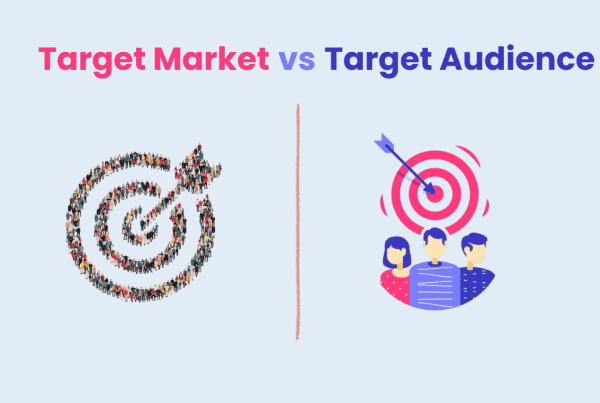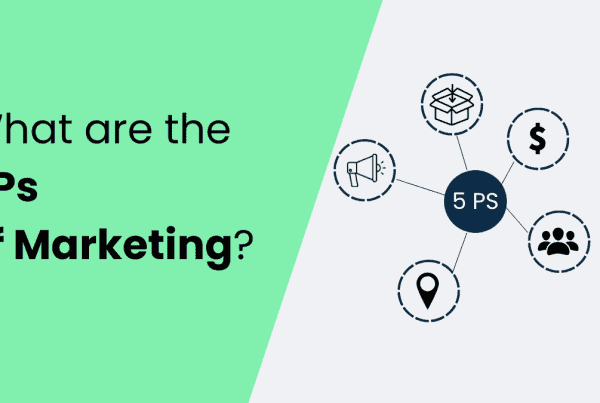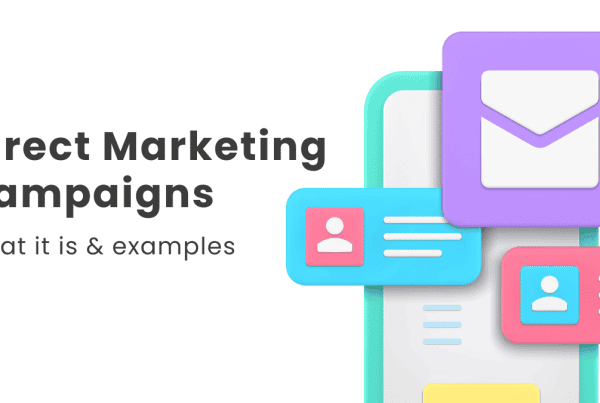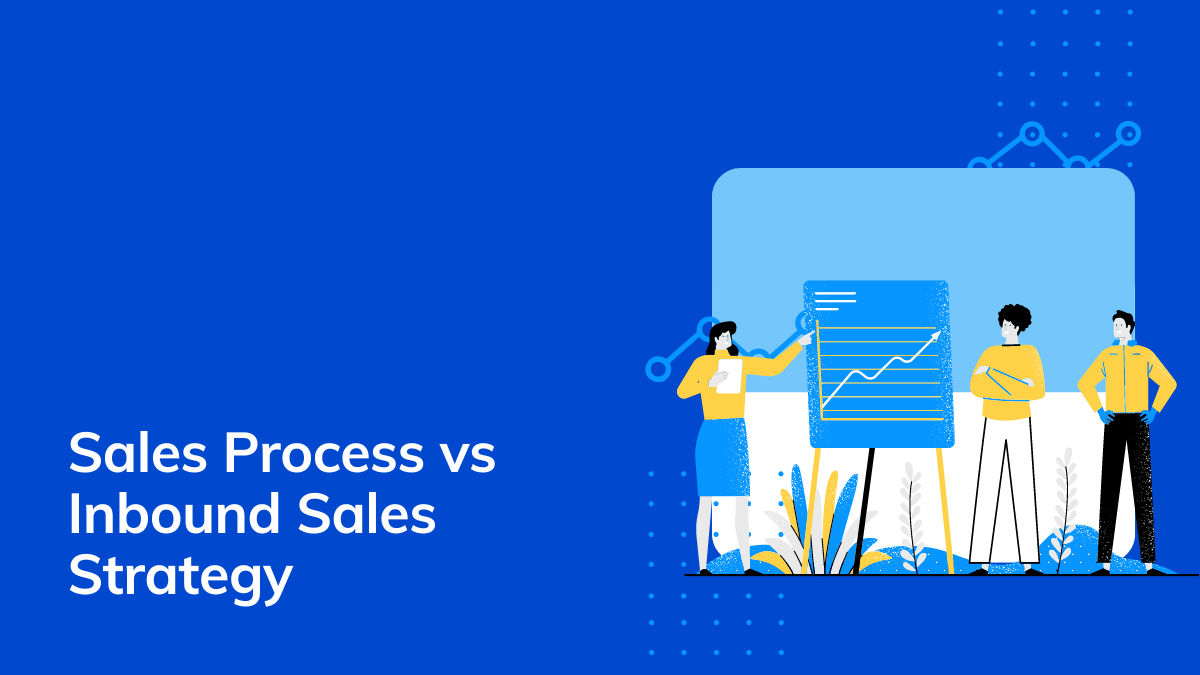
Imagine the world of sales as a constantly changing game where the way you play determines if you win or lose. In this game, there are two main ways to score points: the old-school way and the new, modern-day way.
The traditional way is like the classic playbook everyone used for ages. It’s all about reaching out to customers directly, making the first move, and trying to convince them to buy your stuff. It’s straightforward, like playing chess with set rules.
Now, there’s this new strategy called inbound sales. Instead of making the first move, you create an environment where customers come to you. It’s more about building relationships and letting customers decide when they’re ready to buy.
Sure, both ways aim to make money and keep customers happy, but they have different playing styles, tactics, and philosophies. It’s like comparing playing chess to playing a video game—same goal, different strategies.
Understanding the Sales Process
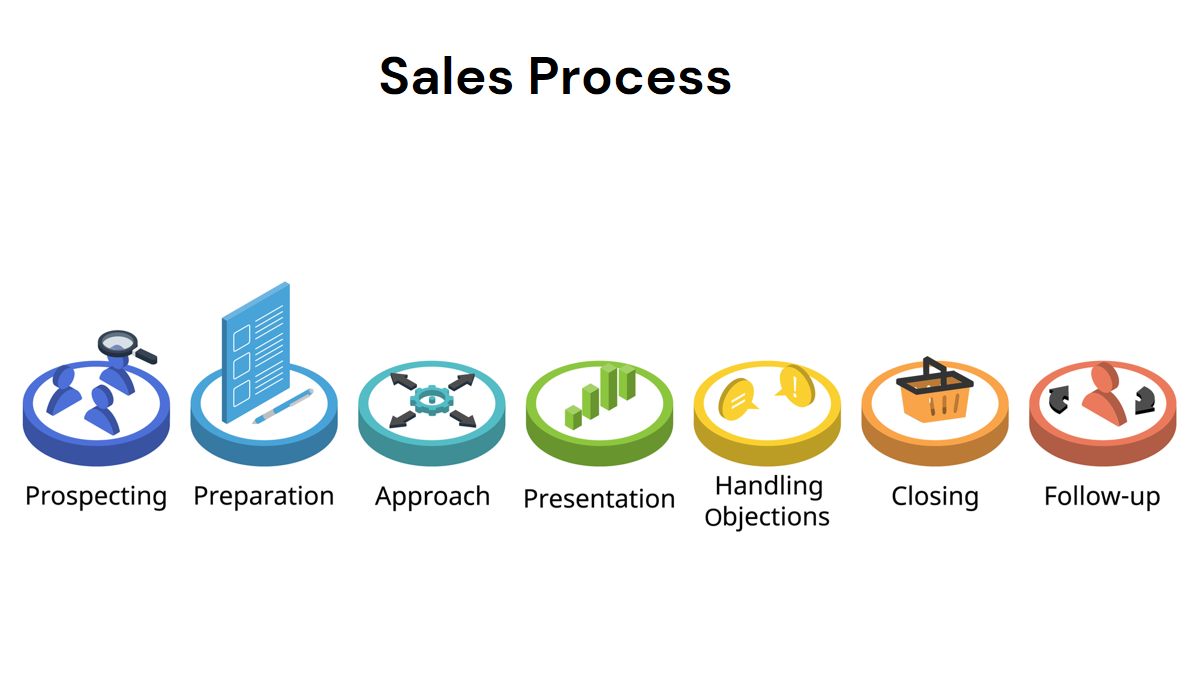
A sales process is like a well-thought-out roadmap that guides a sales team through the entire journey of connecting with potential customers and turning them into happy clients. It’s like a carefully crafted plan that helps sales reps navigate the twists and turns of the customer journey.
In the good old days, this roadmap had a simple and direct route. Picture it like a traditional treasure hunt where the salesperson takes the lead, reaching out to people directly. It’s akin to knocking on doors, introducing the product or service, and trying to spark a conversation that hopefully leads to a successful deal. This straightforward approach was like a script where the salesperson played the leading role, guiding the potential customer toward making a purchase.
Back then, it was a bit like a classic handshake—you make the first move, initiate the conversation, and try to establish a connection. The salesperson was the captain steering the ship, setting the course for potential clients.
However, as time went on, a new game plan emerged in the form of inbound sales, flipping the script on its head. Instead of the salesperson taking the reins from the start, the focus shifted towards creating an environment where potential customers naturally gravitate towards the product or service. It’s like setting up a shop with an enticing display, and customers wander in because they’re genuinely interested.
This shift doesn’t make the traditional approach obsolete; it’s more about adding a new dimension to the sales playbook. It’s akin to having two different maps—one for the direct route and one for the scenic route, both leading to the same treasure. The ultimate goal remains unchanged: turning potential customers into satisfied clients. It’s just a matter of choosing the path that aligns with the ever-evolving dynamics of the sales landscape.
Key Components of a Sales Process
Let’s have a look at the key components of the sales process:-
Prospecting
Salespeople are like detectives on a mission. Their job is called prospecting, and it’s a bit like playing detective to find out who might be interested in buying what they’re selling.
Here’s how it works: they make cold calls (calling people they don’t know), send emails, and attend events where they can meet and chat with potential customers. It’s like gathering clues to uncover who could be a perfect fit for the product or service they’re offering. We took the example of a detective because according to Zendesk “, 40 percent of salespeople agreed that prospecting is the most challenging part of the sales process.”
It is about looking for the right leads. By doing these detective-like activities, they can discover and connect with people who are likely to be interested in what they have to offer. It’s all about finding the best matches and turning potential customers into happy clients.
Qualification
Think of sales as a matchmaking game, and qualification is like figuring out if the potential customers and the product/service are a perfect match. It’s the step where salespeople play matchmakers and check compatibility.
They look at things like: Does the customer have the budget for what we’re offering? Does our product or service solve their problems or meet their needs? And, most importantly, do they have the power to say “Yes” to the deal?
It’s a bit like making sure both sides are on the same page before setting up the date. Salespeople want to ensure that the customer is a good fit for what they’re selling, and vice versa. It’s all about creating a win-win situation where both parties are happy with the match before moving forward.
Presentation
Salespeople act like enthusiastic hosts, putting a spotlight on why their product or service is awesome. Think of it as a personalized performance, where they explain how their thingamajig can specifically solve the customer’s problems or meet their needs. It’s like saying, “Hey, this is exactly what you’ve been looking for, and here’s why.”
Imagine it as the moment when you get to reveal the magic, showcasing the unique aspects that make your product or service stand out. The goal is to make the customers find exactly what they need.
In a nutshell, the presentation is like a spotlight moment where the salesperson highlights the best parts of their offering, ensuring it fits seamlessly with what the customer is looking for. It’s like presenting the perfect solution to their needs in a way that gets them excited about the possibilities. According to SPOTIO “Salespeople who actively seek out and exploit referrals earn 4 to 5 times more than those who don’t”
Handling Objections
Dealing with objections in sales is similar to being a friendly troubleshooter. If a person has concerns or doubts about making a purchase, salespeople jump in to assist. They listen to the customer’s thoughts and then provide information to address those worries. It’s like having a conversation to ensure the customer feels at ease and sure about their decision to buy.
Closing
Closing in sales is the pivotal moment, akin to sealing the deal and bringing all the efforts to fruition. It’s the exciting phase where salespeople engage in crucial discussions, addressing aspects like pricing, going through contract specifics, and solidifying the customer’s commitment to making the purchase.
Picture it as the grand finale, where both parties work together to cross the finish line of agreement. In this phase, the salesperson ensures that all the details are clear, and the customer is wholeheartedly on board with the decision to buy. It’s not just about closing the sale; it’s about creating a win-win scenario where both the customer and the salesperson are content and satisfied with the finalized arrangement. It’s like the last chapter of a story, ensuring that the journey ends on a high note with everyone happy about the partnership formed.
Follow-Up
Follow-up in sales is like keeping in touch with friends after a great day out but in a business context. When someone buys a product or service, the salesperson doesn’t just vanish. They reach out to ensure the customer is satisfied, ask if there are any thoughts to share, and maybe recommend other things they might enjoy. It’s about maintaining the connection and ensuring the customer feels valued even after making the purchase. According to BREVET “80% of sales require 5 follow-up calls after the meeting. 44% of sales reps give up after 1 follow-up.“
Understanding Inbound Sales Strategy
Unlike the traditional sales approach, where you actively seek out customers, inbound sales is more like creating a magnetic field that attracts customers without you having to chase them. According to SPOTIO, “46% of marketers reported that inbound marketing gave a higher ROI.”

This strategy revolves around using online tools such as digital marketing and crafting engaging content that people genuinely want to see. Instead of pushing the product onto them, it’s about building an environment that sparks curiosity and interest, so customers naturally want to explore what’s being offered. It’s like making the product so appealing that customers are drawn to it.
Key Components of an Inbound Sales Strategy
Let’s now understand the crucial parts of Inbound sales strategy:-
Content Marketing
Content marketing is a bit like being helpful. Instead of just conversing about how great a product is, it’s about creating useful and interesting stuff that solves problems for people. This could be in the form of articles, videos, or other things that grab the audience’s attention. The goal is to become a go-to source for information, so when people think about a certain topic, they think of that brand as the expert. This is being a friend giving friendly advice and helpful tips.
SEO and Social Media
SEO and social media are like making sure everyone knows about the things you have to offer online. SEO is about making your stuff show up when people search for things on the internet, so it’s easy to find. It’s like putting a spotlight on your website or content so that more people see it. Social media is like a big party where everyone hangs out. By sharing your stuff there, you’re making sure it reaches a lot of people and gets the attention it deserves. According to a study, “78% of salespeople using social media perform better than their peers”
Lead Generation
Think of Lead generation as setting up a candy stand that attracts all the kids in the neighborhood. Instead of going around looking for customers, it’s about creating something amazing, like a free sample or a fun game that makes people come to you. In the online world, it could be things like making interesting books, hosting cool web events, or giving away free trials of your product. It can be so awesome that people can’t resist checking it out, and in doing so, they become potential customers. 63% of marketing leads and sales happen because of referrals” so it is important that your customers also refer other people.
Lead Nurturing
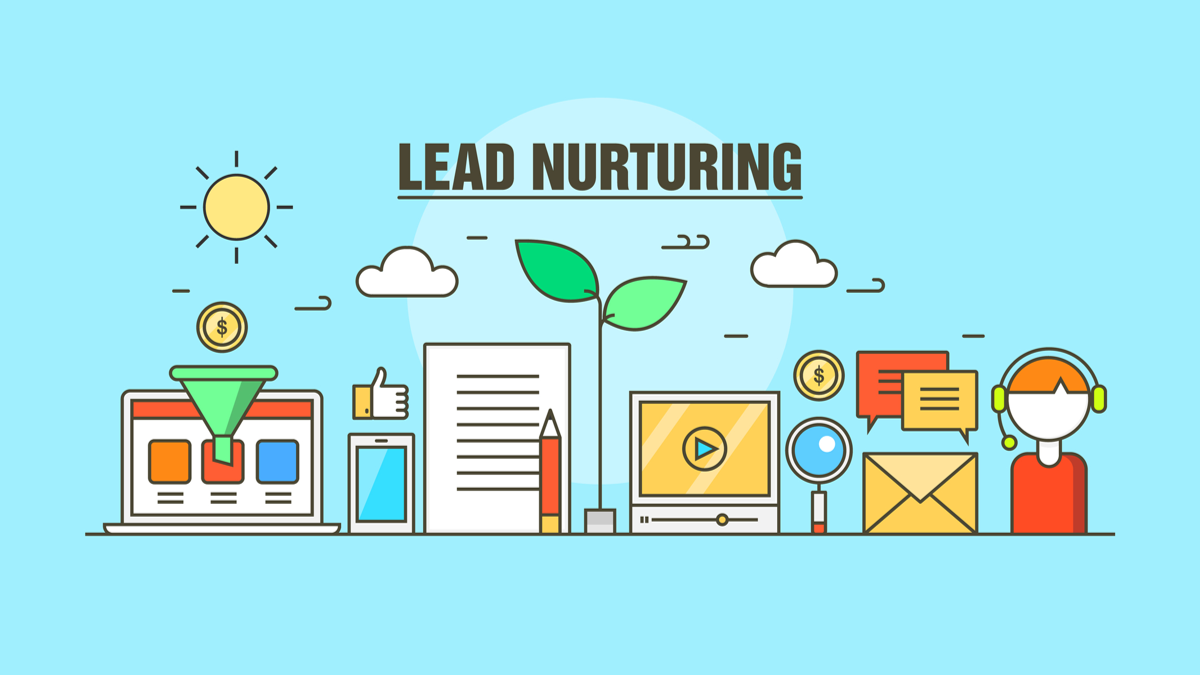
Lead nurturing is like growing a friendship. Once people show interest in what you have to offer, it’s not about rushing them into buying. Instead, it’s like being a good friend who checks in, listens to what they need, and helps them out. It involves sending them messages that are just right for where they are in deciding to buy, kind of like sharing the perfect advice at the right time. It’s about building a connection over time by providing useful information and making sure they feel taken care of like a friend would.
Sales Enablement
Sales enablement is like gearing up a superhero team with all the right gadgets and knowledge they need to save the day. Instead of just sending them out there, it’s about making sure they have the best tools, like advanced tech and useful information, to connect with potential customers and turn them into happy customers. It’s like providing the sales team with everything they need to be super effective and successful in their mission to sell products or services.
Customer-Centric Approach
A customer-centric approach is all about making the customer the star of the show. Instead of focusing on what the business wants, it’s about putting the customer in the spotlight, understanding exactly what they need, and customizing the experience just for them. It’s like tailoring everything to match their likes and dislikes, ensuring that every interaction is a perfect fit for what the customer wants and how they like to do things. In this approach, the customer is not just a part of the strategy; they are the heart of it.
Comparing Sales Process and an Inbound Sales Strategy
Let’s analyze the results of the above comparison.
Initiation of Interaction
Starting a conversation in sales usually begins with the salesperson reaching out to potential customers. It’s like they take the first step by showing people what you offer. On the flip side, an inbound sales strategy, it’s more about creating something valuable that customers come to you without the salesperson making the first move. It’s like setting up a booth with something so interesting that people can’t help but stop by and check it out on their own.
Customer Focus
In a regular sales process, it’s like shining a spotlight on the product and saying, “Look at how great this is!” It’s all about sharing features and benefits to get people interested. On the other hand, in an inbound sales strategy, the spotlight shifts to the customer. It’s like saying, “Tell me what you need, and I’ll make it happen.” The focus is on understanding exactly what the customer wants and making sure the product or service is a perfect fit for them. It’s like flipping the script from providing details of the product to listening to what the customer needs.
Timing and Context
When it comes to the timing and flow of things, a regular sales process is like following a strict schedule, moving step by step from finding potential customers to sealing the deal. It’s like ticking off tasks in a checklist, making sure everything happens in a specific order. In contrast, with an inbound sales strategy, it’s more like going with the flow. It adapts to the customer’s journey, adjusting at different points where the customer interacts with the product or service. It’s like being flexible and changing the plan based on what the customer is doing and when they’re doing it.
Flexibility and Adaptability
Being flexible and adaptable in inbound strategies is like being open to changing plans when needed. It’s all about being able to adjust things based on how customers are acting and what’s happening in the market. Instead of sticking to a fixed way of doing things, it’s like saying, “Let’s see what works best and make changes as we go.” The focus is on getting better and better by learning from how customers are interacting and using data to make smart decisions. It’s like being nimble and ready to switch things up for the better.
Communication Style
Communication in a regular sales process is like talking to a friend and saying, “Hey, let me tell you all about this amazing thing!” The salesperson takes charge, leading the conversation and making sure all the important points are covered. On the other hand, in inbound strategies, it’s more like having a chat with a friend over time. It’s not about pushing the product right away; it’s about building a relationship. It’s like saying, “Let’s get to know each other, and when you’re ready, we can talk about the cool stuff I offer.” The focus is on creating a friendly and collaborative connection instead of just delivering a quick sales pitch.
Which approach are you going to use?
While both a traditional sales process and an inbound sales strategy share the ultimate goal of driving revenue and fostering customer relationships, their approaches and methodologies differ significantly.
The evolution of the sales landscape has seen a shift from conventional, outbound-focused methods to more customer-centric, inbound strategies. The choice between the two depends on various factors, including the nature of the product or service, the target audience, and the overall marketing philosophy of the organization.
In an era where customer experience reigns supreme, understanding and incorporating the principles of both approaches may be the key to unlocking unprecedented success in the competitive world of sales.
References:
- https://www.ombud.com/blog/what-is-the-difference-between-a-sales-process-and-an-inbound-sales-strategy/
- https://revenuegrid.com/blog/difference-between-sales-process-and-inbound-sales-strategy/
- https://blog.hubspot.com/sales/inbound-sales-methodology
- https://www.yesware.com/blog/inbound-selling/
- https://www.tslmarketing.com/blog/15-inbound-sales-statistics-to-share-with-your-team

